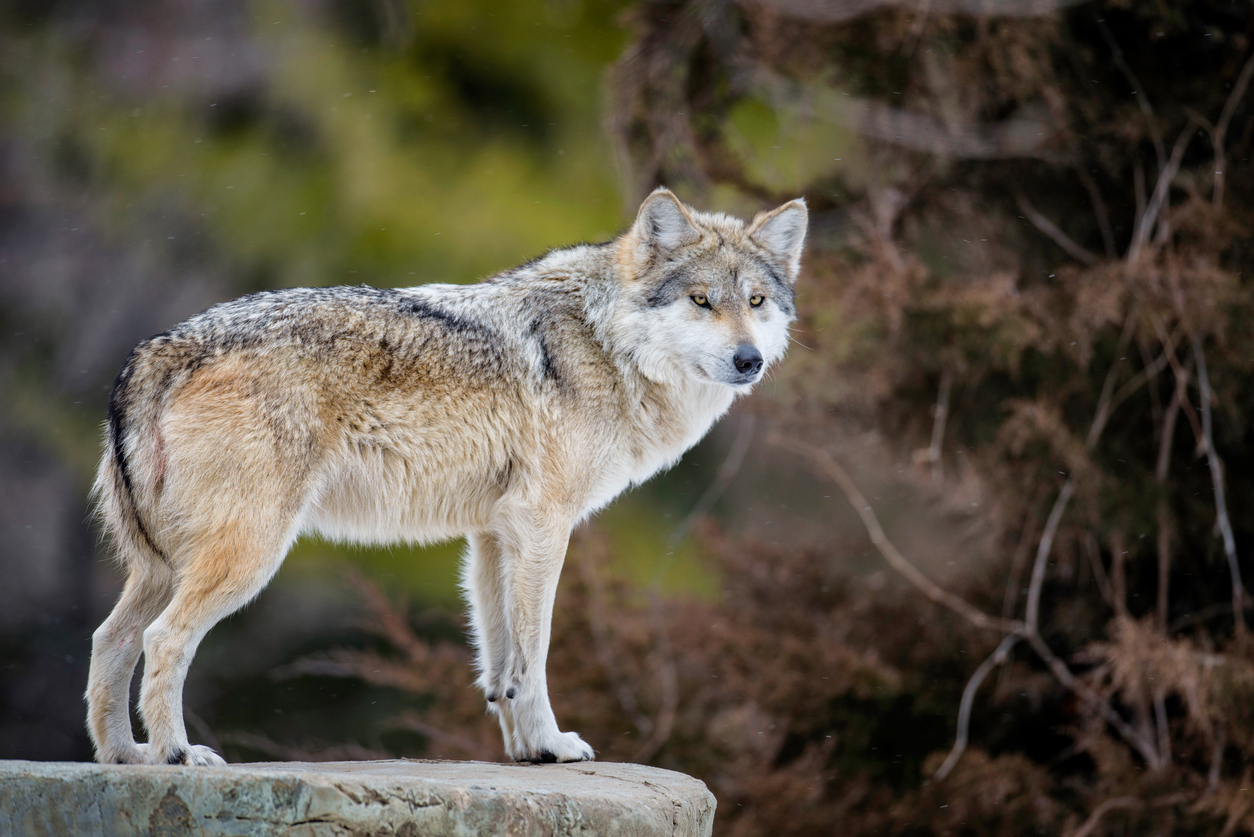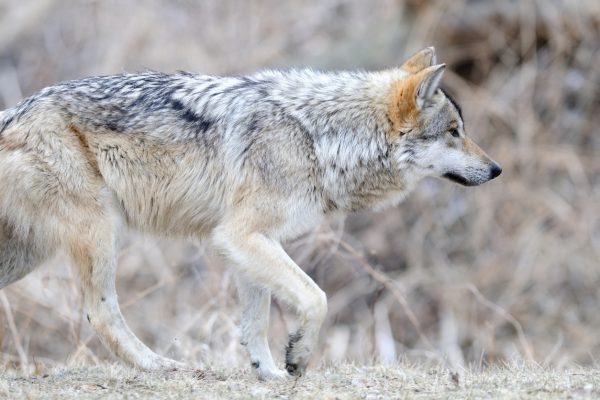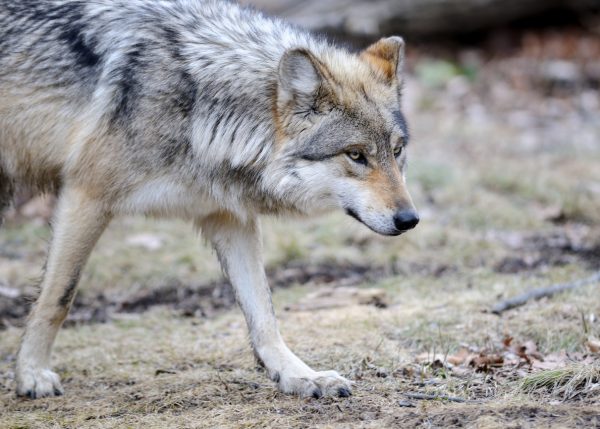Grey Wolf Spotted In France’s Border Region – 1st Time in 100 Years

There is good news for one animal in Europe — the grey wolf. As its numbers increase in various regions of France, a new sighting has given rise to hope that it is now making a comeback on the border between Charente and Dordogne.
Sometimes it’s easy to despair about the number of animal species experts say are on the brink of extinction due to habitat loss, poaching and climate change.
Earlier this month, after 28-year-old Marine Varraniac-Francois had taken her son to day care and was returning home, she spotted what she at first thought was simply a dog. She told Le Parisien, “At first I thought it was a big dog,” she explained, “but it looked a lot like a wolf.

He was scared, you could tell that he was scared.” Nonetheless, she said, it was “very exciting” to see the once-rare animal so close to her village of Gurat. “He passed within two or three metres of the car,” she added.
Wolves have been reappearing in France since 1992, when a mature, mating pair crossed into the country from Italy.
Since then, its numbers have steadily risen, and experts now believe that more than 500 wolves roam around the countryside. Unconfirmed sightings have even been reported near Paris, thought experts cannot say for sure those were actually wolves.
Wildlife experts are heralding the return of wolves to this area of France, as they were believed to be extinct in Charente since 1926.
Now their population is growing, and experts say it can even be classified as “demographically viable,” meaning its population is healthy, and will continue to grow.
But as the wolf flourishes, so does criticism that the animal is a danger to livestock, and must be carefully controlled.
In fact, the government is allowing a small percentage of the wolf population to be culled this year, and says it will increase that number if attacks on cows and sheep become alarming. In the meantime, however, conservationists are studying the grey wolf numbers closely.

France’s Office of Biodiversity (OBD) said that seeing a single wolf at the roadside is “not surprising at all, and is part of normal behaviour,” according to Yann de Beaulieu, who is head of the OBD’s big predator department.
During the fall and winter, lone wolves are sent to scout for new territories, sometimes covering as much as 800 kilometres. Other wolves then follow, and establish new dens for the females and cubs.
Many myths about wolves persist today, according to livingwithwolves.com, a nonprofit organization in America dedicated to educating people about “canis lupus,” the Latin name for wolf.
The most persistent myth is that they are inordinately dangerous to people, when in fact they are very shy and avoid contact with humans if at all possible. It’s also a myth, the organization says, that wolves kill for reasons other than survival.
They are predators, of course, but do not wantonly go about killing sheep and other livestock for sport. They kill to sustain themselves, that’s all; unfortunately, if a farmer loses two sheep to a wolf pack it can seem like his herd is being unfairly targeted. That’s when unnecessary cries for culling begin.
Fortunately, no one in France seems to be losing their sensible approach to the wolves, at least not right now. The population is being closely monitored, as are the numbers of encounters with man and livestock.
They Are Back – Pigs in Siberia Raid Cognac Supply at Local Store
Let’s hope that this magnificent animal is able to coexist with humans, which will benefit all — the environment, the food chain, and humanity, who came so close to losing this keystone species in the wilds of France, and elsewhere.
